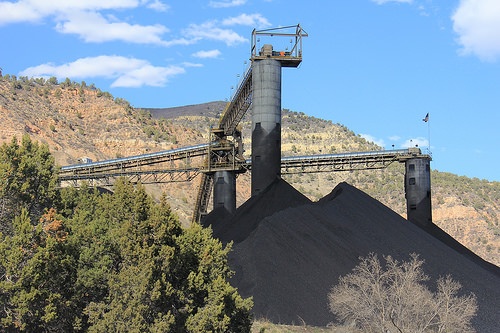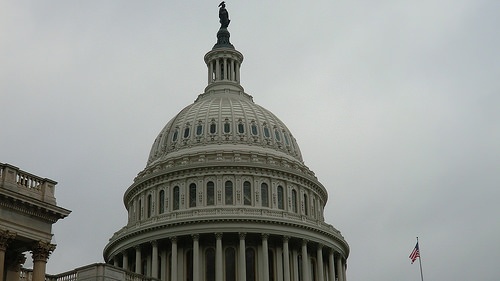On December 14, the FCC voted to rescind its “net neutrality” rules barring Internet service providers from either favoring or disfavoring certain online content over other content by providing faster, prioritized access to the favored content. As expected, the changes came in a three-to-two vote of the commission members.
This issue has had a convoluted history, dating back to when dial-up was the primary means to access materials online. In 2002, the commission decided that then-emerging broadband access should be classified under the law as an “enhanced information service,” which is subject to little regulation, rather than as a “basic telecommunications service,” which is more highly regulated, like a public utility.
For example, the regulation of old-fashioned telephone service as a basic service means that telephone companies cannot keep their customers from calling customers of other phone companies, or from receiving such calls.
The commission then tried to enact “net neutrality” rules in 2008 and in 2010, both of which were struck down by the courts because of the prior classification of broadband access as an enhanced service. So in 2015, the FCC reclassified Internet access as a “basic service” and imposed new net neutrality regulations on the basis of that classification. With the reclassification in place, the commission’s net neutrality rules were upheld by the courts last year.
Now the commission has voted to again classify Internet access as an enhanced service and rescind the net neutrality regulations. FCC Chair Ajit Pai has said that if Internet service providers unfairly favor some online content over others, the issue should be handled by the Federal Trade Commission as an anti-competitive business practice.
It is important to note that many of the concerns of net neutrality advocates are so far primarily theoretical. But without net neutrality regulations, Internet service providers could favor content from their corporate siblings or subsidiaries, or from content providers that have paid for such priority.
Without net neutrality rules in place, the accessibility of an individual business’s website or cellphone app could depend on the specific circumstances in their markets. Large companies may, for example, be able to afford prioritization from ISPs and dominant businesses may have enough customer support to avoid being deprioritized, so that customers would object if an ISP blocked or limited access. But smaller and independent businesses may not have the clout, in terms of either funds or user demand, to avoid having access to their online material slowed.
The FCC’s vote eliminating the net neutrality rules is not likely to be the last word on the issue. Several state attorney generals have already announced a court challenge and other groups are likely to file separate lawsuits. The changes will probably be put on hold until the court challenges are resolved. Some members of Congress have endorsed legislation on the issue.
In the Internet era, we’ve become used to instant answers and results, but it appears that the question of net neutrality, like many legal issues, will be resolved the old-fashioned way: slowly.
This column is for educational purposes only; it does not constitute legal advice.
Audit, Compliance and Risk Blog
Final Determination of Net Neutrality Fate Likely to be Slower Than Dial-up
Posted by Eric Robinson on Tue, Dec 19, 2017
Tags: Business & Legal, Internet
Highly-publicized revelations about extensive workplace harassment have cost many alleged harassers their high-powered positions (including US Senator Al Franken), and are producing a variety of proposals to toughen standards. One of the first new provisions was enacted by the U.S. Senate on November 9. The Senate Anti-Harassment Training Resolution of 2017 (S.Res. 330) will require anti-harassment training in Senate offices. The Resolution applies to internal governance of the Senate, so does not apply to any other body, such as the House of Representatives (where House Resolution 630, requiring annual training by each member, officer and employee in employee rights, including anti-harassment and anti-discrimination, was passed on November 29 but is being reconsidered).
Read MoreTags: Business & Legal, Employer Best Practices, Employee Rights, Workplace violence
As the Attorney General of Oklahoma, Scott Pruitt made his national reputation suing the Environmental Protection Agency (EPA) to reverse or delay the agency’s attempts to expand environmental controls and the scope of its authority. Now that he’s EPA Administrator, Pruitt is moving to ensure that his agency doesn’t make use of the second major type of agency-defendant litigation, in which an agency is sued and then settles on terms favorable to the plaintiff’s goals. In a Directive and Memorandum issued October 16, Pruitt argues that this “sue and settle” litigation represents collusion between agencies and advocates, bypassing normal legislative and administrative processes and allowing agencies to redirect their efforts through “regulation by litigation.” And because litigation settlements typically involve only the active parties and the judge, these approaches tend to freeze out others – states, groups, and individuals – who lose the opportunities to participate that they’d be provided by normal legislative and regulatory proceedings.
Read MoreTags: Business & Legal, Environmental risks, Environmental, EPA
Christmas holidays bring joy, laughter and vast amounts of plastic waste and junk into our lives, but the wastefulness can be avoided with just a bit of creativity.
Read MoreTags: Environmental risks, Environmental
New US Climate Science Special Report Documents Climate Change
Posted by Jon Elliott on Tue, Nov 28, 2017
Although many agencies and officials in the Trump administration downplay or deny human contributions to climate change, a major new government report accepts that proposition, and documents its extent. On November 5, the U.S. Global Change Research Program published its Climate Science Special Report, which will serve as Volume 1 of the U.S. Fourth National Climate Assessment (NCA4). The Program is a group of 13 federal agencies with relevant authority and expertise, with the development of the NCA4 overseen by the National Oceanic and Atmospheric Administration (NOAA). The Program was established by the Global Change Research Act (GCRA) of 1990, to “assist the Nation and the world to understand, assess, predict, and respond to human-induced and natural processes of global change.” As summarized in the Executive Summary to the Report:
Read MoreTags: Environmental risks, Environmental, EPA, climate change
EPA To Support Energy Independence By Easing Air Emission Regulation
Posted by Jon Elliott on Tue, Nov 21, 2017
In March 2017, President Trump issued an executive order (EO) “Promoting Energy Independence and Economic Growth,” which packaged a set of repeals and re-directions to move US federal policies firmly away from climate change and toward domestic fossil fuels. (I wrote about it here). Among its many provisions, the EO directs federal agencies, including the Environmental Protection Agency (EPA), to “review all existing regulations, orders, guidance documents, policies, and any other similar agency actions (collectively, “agency actions”) that potentially burden the development or use of domestically produced energy resources…” The EO also orders EPA to review several specific rules.
Read MoreFor First Time, FTC Goes After Bloggers For Paid Endorsements
Posted by Eric Robinson on Thu, Nov 16, 2017
The Federal Trade Commission’s guidelines for testimonials and endorsements require disclosure of any payment or benefit that endorsers receive for their endorsements.
Read MoreTags: Business & Legal, Internet, directors, directors & officers
Government Accountability Office Encourages Federal Consideration of Climate Change Costs
Posted by Jon Elliott on Tue, Nov 14, 2017
As I’ve discussed in recent blogs, President Trump’s executive agencies, including the Environmental Protection Agency (EPA), are dramatically reducing federal attention to “climate change.” Obama-era initiatives are being terminated or reversed, and planning and communication are being reduced or eliminated. (For example, I noted in my recent discussion of EPA’s draft Strategic Plan, here, that the draft does not mention the phrases “climate change” or “greenhouse gas” even once).
Read MoreTags: Environmental risks, Environmental, EPA, climate change
Although Environmental Health and Safety (EH&S) requirements target hundreds of micro-organisms (primarily viruses and bacteria), important hazards remain unregulated. Many await definitive scientific conclusions, but others need testing and control methodologies that would allow requirements to be designed and administered, sufficient regulator and regulated entity resources, and/or high enough political priorities. Until recently, one of these unregulated pathogens has been the legionella bacterium, first identified in 1976 as the cause of “Legionnaire’s disease,” which appears as a form of pneumonia.
Read MoreTags: Health & Safety, OSHA, Environmental risks, Environmental, EPA
EPA Delays Action to Update Rule Governing Lead in Drinking Water
Posted by Jon Elliott on Tue, Oct 31, 2017
In October 2016, EPA produced a White Paper announcing the “urgent need” for revisions, describing key issues and possible revisions, and projecting to propose extensive LCR revisions during 2017. However, since President Trump assumed office, EPA’s priorities are shifting and its resources are being reduced (for example, I wrote about EPA’s Back-to-Basics Agenda here). Most recently, EPA’s formal agency-wide regulatory agenda now postpones the issuance of a Notice of Proposed Rulemaking (NPRM) until January 2018 and a final rule until June 2019. While we await action, it’s worth considering how PWSs can reduce lead exposures, particularly since building owners and employers might consider improvements to plumbing and fixtures that could improve workplace water quality.
What Does LCR Require?
The LCR divides PWSs into three groups based on the numbers of customers served, and assigns tailored responsibilities for testing, corrosion control, source water treatment, and pipe replacement. The three groups are:
Read MoreTags: OSHA, Environmental risks, Environmental, EPA, clean water










